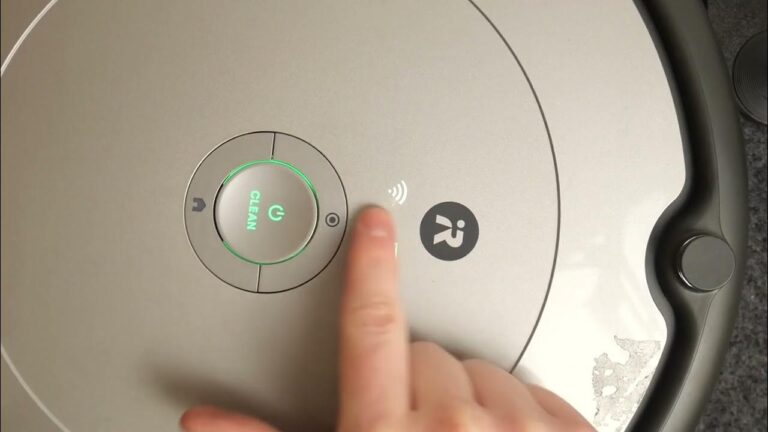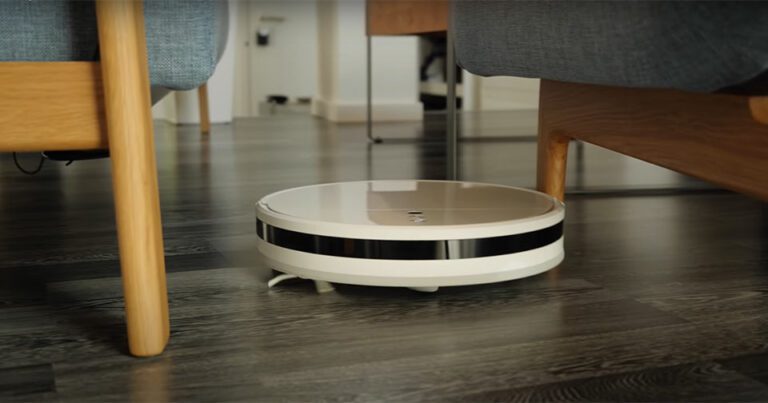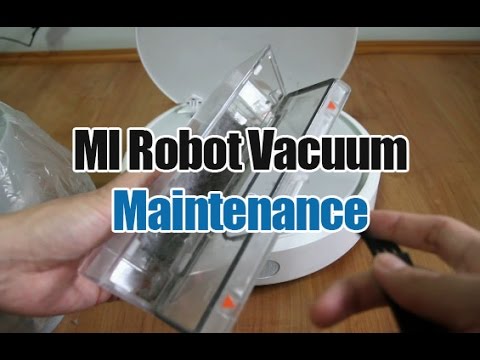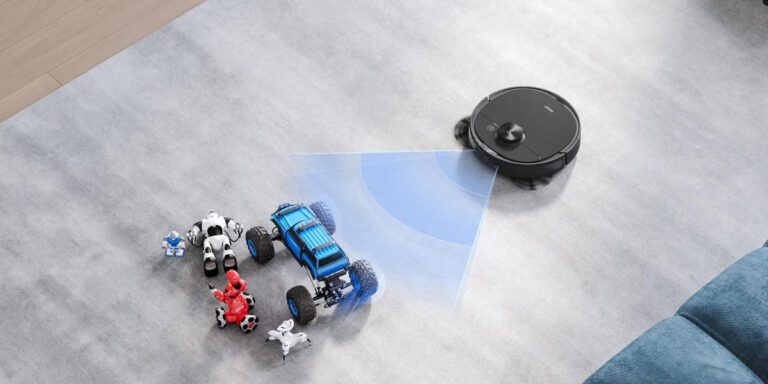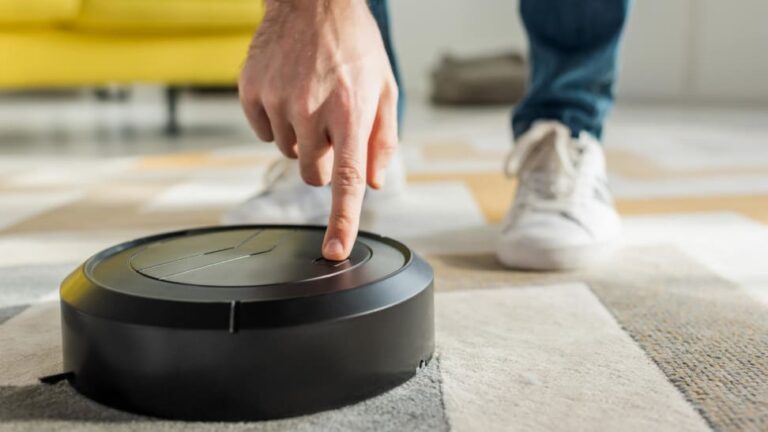How the Robot Vacuum Cleaner Works?

A robot vacuum cleaner works by using sensors to detect dirt and navigate through the space to clean it. Robot vacuum cleaners are becoming increasingly popular household appliances as they offer convenience and efficiency in cleaning.
These smart devices utilize advanced technology, including sensors and algorithms, to navigate and clean floors autonomously. Equipped with infrared sensors and cameras, the robot vacuum cleaner scans its surroundings, maps the area, and identifies obstacles. It then moves in a systematic pattern, using brushes and suction power to collect dirt and debris from the floor.
The collected dirt is stored in a dustbin, which can be easily emptied. Some robot vacuum cleaners also have additional features like mopping capabilities and virtual walls to restrict their cleaning area. With their ability to operate on different floor types and handle various surfaces, robot vacuum cleaners provide a time-saving solution for maintaining a clean home.
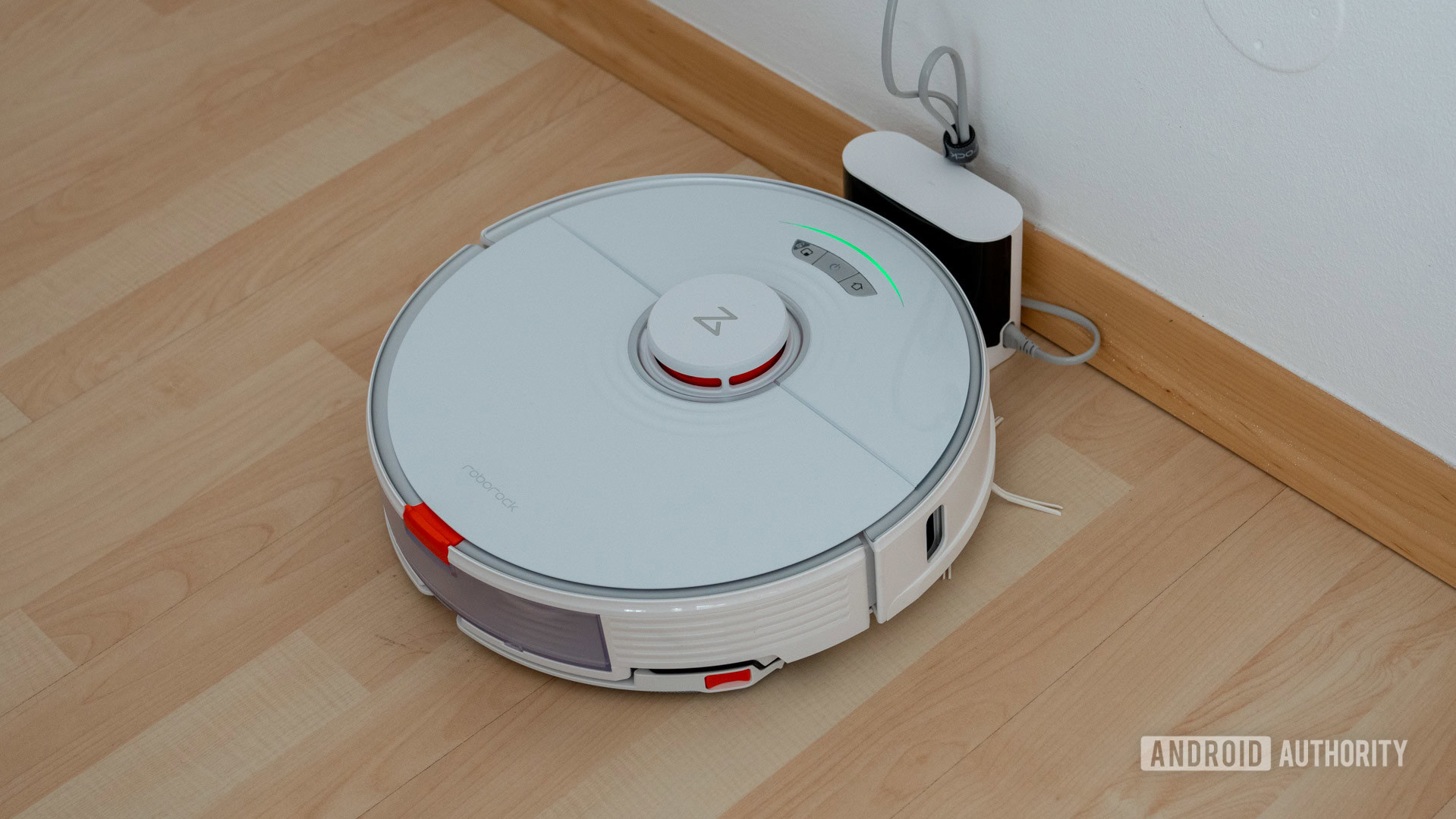
Credit: www.androidauthority.com
Understanding The Basics Of Robot Vacuum Cleaners
Robot vacuum cleaners are a revolutionary home appliance that offers convenience and efficiency. These intelligent devices use advanced technology to clean floors and carpets without human intervention. Equipped with sensors and mapping capabilities, they navigate through your home, avoiding obstacles and efficiently cleaning every nook and cranny.
Unlike traditional vacuum cleaners, robot cleaners operate autonomously, saving you time and effort. They have various benefits, including automatic scheduling, hands-free operation, and the ability to clean hard-to-reach areas. With their compact size and sleek design, they can effortlessly maneuver under furniture and in tight spaces.
The technology behind robot vacuum cleaners is constantly evolving, with manufacturers constantly improving their features and performance. Investing in a robot vacuum cleaner is a smart choice for anyone looking to simplify their cleaning routine and enjoy a spotless home with minimal effort.
Components And Mechanisms Of Robot Vacuum Cleaners
Robot vacuum cleaners are equipped with various components that enable their efficient operation. These devices use sensors to navigate and detect obstacles in their path. By understanding how these sensors work, we can gain insight into the intelligent navigation abilities of robot vacuum cleaners.
These devices utilize different brushes and cleaning mechanisms to effectively clean various surfaces. Exploring the types of brushes and cleaning mechanisms used by robot vacuum cleaners further enhances our understanding of their cleaning capabilities. By analyzing the key components of robot vacuum cleaners, we can appreciate how these devices efficiently clean our homes.
Understanding the intricate workings of these machines can help us make informed decisions when purchasing a robot vacuum cleaner for our cleaning needs.
How Robot Vacuum Cleaners Navigate And Clean
Robot vacuum cleaners operate by utilizing mapping and navigation techniques to efficiently clean your home. These smart devices employ advanced algorithms and cleaning patterns to ensure thorough and systematic cleaning. By understanding these patterns, you can better appreciate the effectiveness of these devices in keeping your floors tidy.
Robot vacuum cleaners offer various modes and features designed to enhance their cleaning efficiency. These features may include edge cleaning, spot cleaning, and virtual barriers, all of which contribute to a comprehensive cleaning experience. With their ability to navigate obstacles and map out rooms, robot vacuum cleaners are able to efficiently clean your floors without requiring any manual intervention on your part.
Advanced Features And Technologies Of Robot Vacuum Cleaners
Robot vacuum cleaners have become an integral part of our homes, thanks to their advanced features and technologies. These intelligent devices are now incorporating the power of AI and machine learning to enhance their cleaning capabilities. By analyzing patterns and gathering data, they are able to adapt to different surfaces and efficiently clean every corner.
Robot vacuum cleaners now offer various connectivity options and app control features, allowing users to monitor and control them remotely. This makes it convenient to schedule cleanings while away from home. Additionally, there have been significant improvements in battery technology, enabling robot vacuum cleaners to have longer run times.
The integration of self-charging capabilities ensures that the device can find its way back to the charging dock when the battery is low, without any human intervention. Overall, these advancements make robot vacuum cleaners more efficient and user-friendly.
Maintenance And Troubleshooting Of Robot Vacuum Cleaners
Robot vacuum cleaners require regular maintenance and cleaning to ensure their optimal performance. By providing proper care, you can extend the lifespan of your device and avoid common issues. Regularly check for any blockages and clean the brushes, filters, and sensors.
Keep the charging area clean and free from any obstacles. Troubleshooting techniques can help address common problems such as a malfunctioning sensor or a robotic cleaner getting stuck. Understanding when to replace parts, such as worn-out brushes or filters, is essential.
When faced with significant issues, it may be necessary to seek professional assistance. Proper maintenance and proactive troubleshooting will ensure that your robot vacuum cleaner continues to help you maintain a clean and tidy home.
Choosing The Right Robot Vacuum Cleaner For Your Home
Choosing the right robot vacuum cleaner for your home requires considering several factors. Firstly, compare popular brands and models to determine which one suits your needs. Next, explore the price range and look for value for money options. Consider the cleaning efficiency, suction power, and battery life of different models.
Also, check if the robot vacuum cleaner includes advanced features like virtual mapping or mapping technology. Additionally, assess the noise level and compatibility with various floor types. Don’t forget to read customer reviews and ratings to gain insights from other users.
Frequently Asked Questions Of How The Robot Vacuum Cleaner Works
How Does A Robot Vacuum Know Where To Go?
A robot vacuum knows where to go by using sensors and mapping technology. It uses sensors to detect obstacles and obstacles, and maps the area to create a cleaning route. The sensors help the robot avoid furniture, walls, and stairs, and the mapping technology allows it to remember the layout of the room.
By continuously scanning the surroundings, the robot vacuum can navigate through the space and clean efficiently. It can also adapt to changes in the environment, such as moving furniture or new obstacles. With its intelligent navigation system, the robot vacuum ensures thorough cleaning without getting stuck or missing any areas.
How Effective Are Robot Vacuum Cleaner?
Robot vacuum cleaners are highly effective in cleaning your floors effortlessly. They autonomously navigate through your home, reaching every nook and cranny to remove dirt, dust, and debris. These smart devices use advanced sensors and algorithms to analyze the layout of your space and create a strategic cleaning path.
With their powerful suction and rotating brushes, they efficiently collect dirt from various surfaces, including carpets, tiles, and hardwood floors. Some models even have mopping functions to further enhance their cleaning capabilities. You can schedule cleaning sessions and control them remotely through mobile apps, making it convenient to maintain a sparkling clean home.
The compact and sleek design of robot vacuum cleaners allows them to go under furniture and reach tight spaces where manual cleaning may be challenging. Overall, these robotic assistants offer a hands-free and efficient cleaning solution for busy households.
How Does A Robot Vacuum Cleaner Work?
A robot vacuum cleaner works by using sensors to detect obstacles and mapping out the room to create a cleaning path. It uses brushes and suction to pick up dirt and debris from the floor.
Conclusion
Robot vacuum cleaners are not just convenient; they are marvels of technology. Understanding their inner workings, from sensor technologies to smart algorithms, can deepen your appreciation for these devices. As they seamlessly navigate and clean your home, you can enjoy a cleaner living space with minimal effort. Embrace the future of cleaning with a better understanding of how these modern marvels operate, and let them do the hard work while you relax and enjoy your tidy home.
